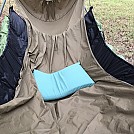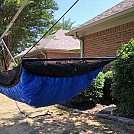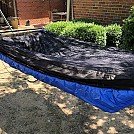Thanks, hutzelbein. I'm starting to think that having the ability to zip up into a bag may be very helpful for staying warm in my Ridgerunner in the shoulder seasons. I will also likely add a lightweight underquilt at some point. Btw, do you think adding an underquilt protector without an underquilt (just insulated pad + underquilt protector) would help much with blocking drafts from below/ends?




 Reply With Quote
Reply With Quote







 If it wasn't about to start raining here soon, I'd go outside and set it up and get some pictures for you. Maybe later?
If it wasn't about to start raining here soon, I'd go outside and set it up and get some pictures for you. Maybe later?


Bookmarks